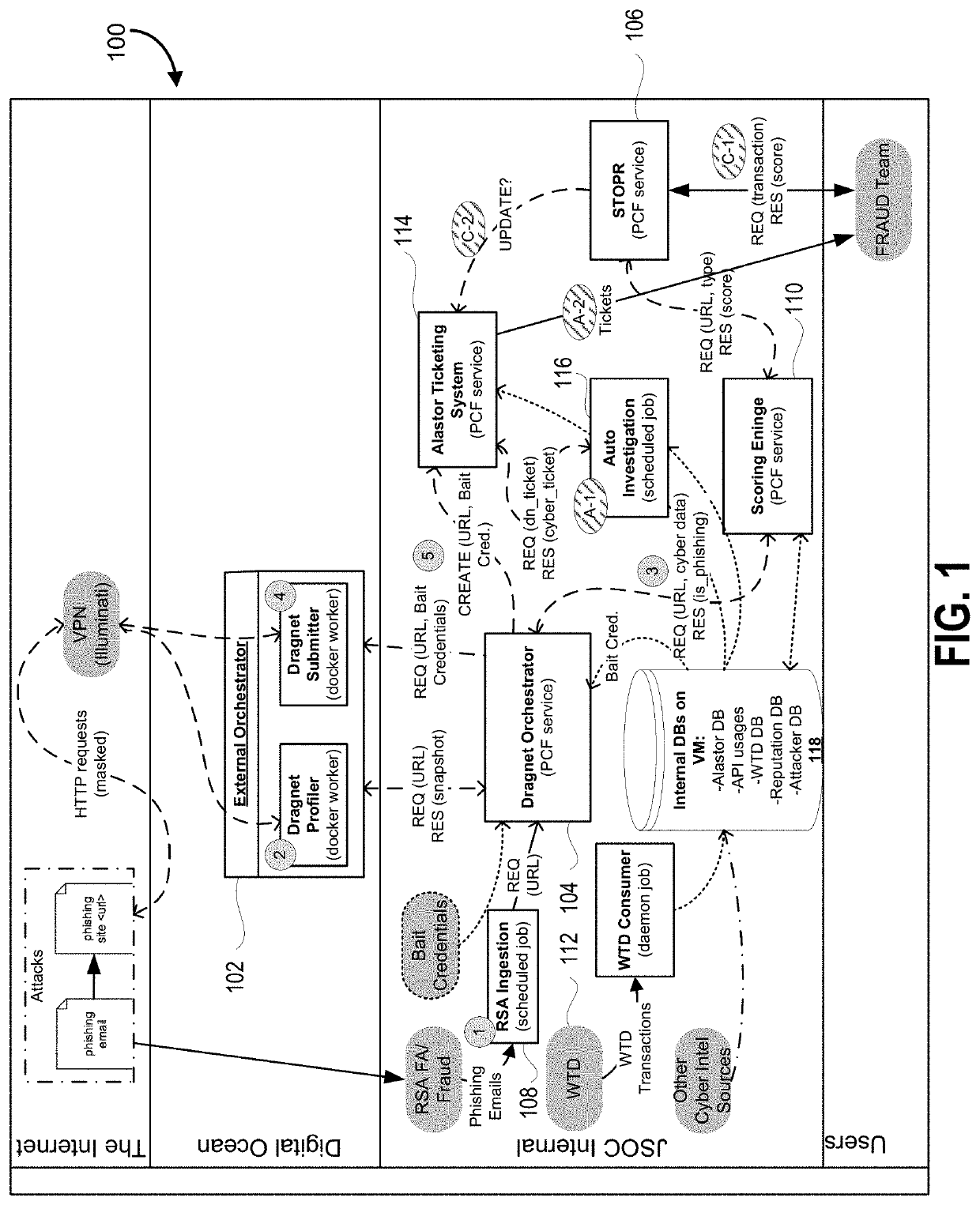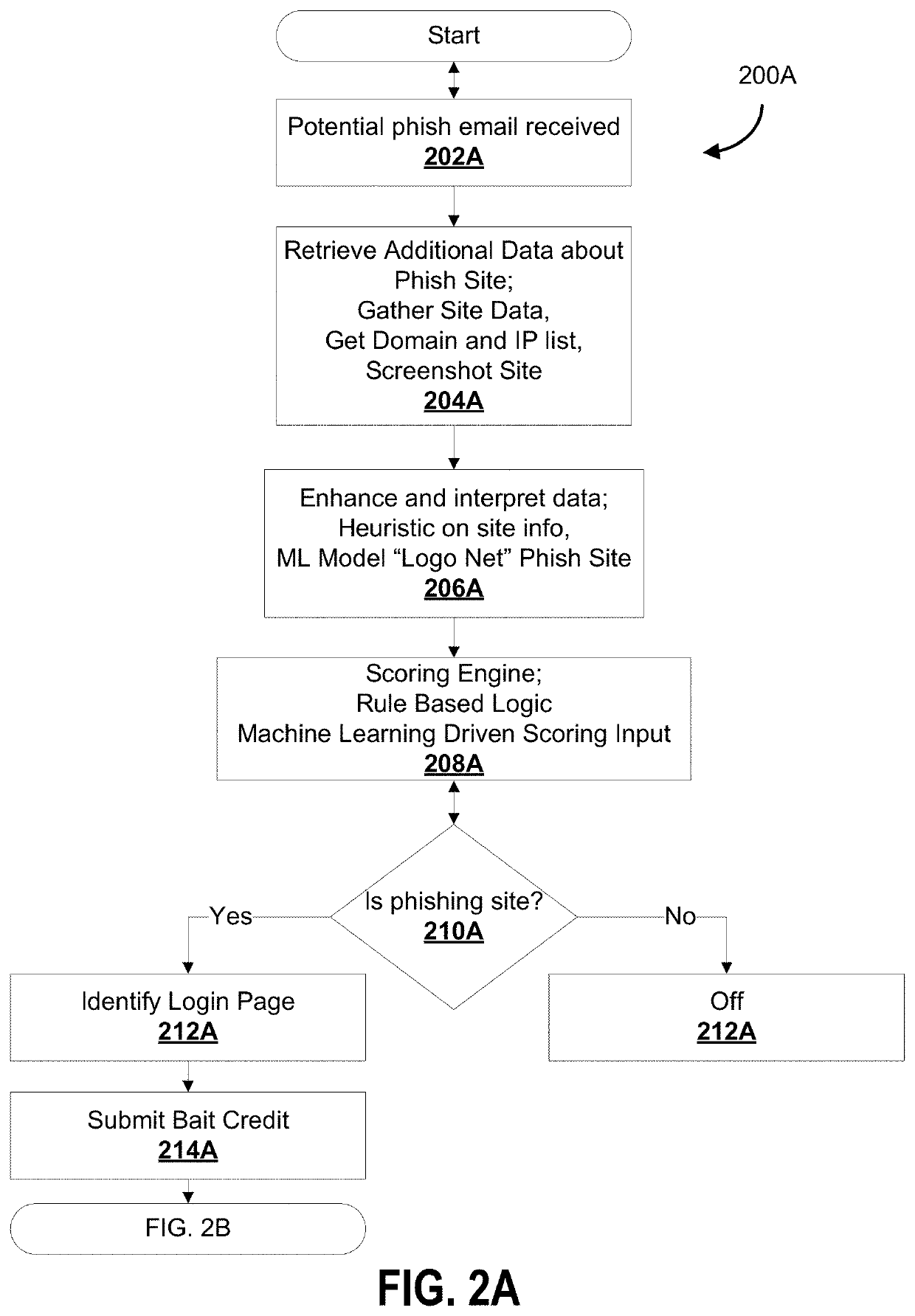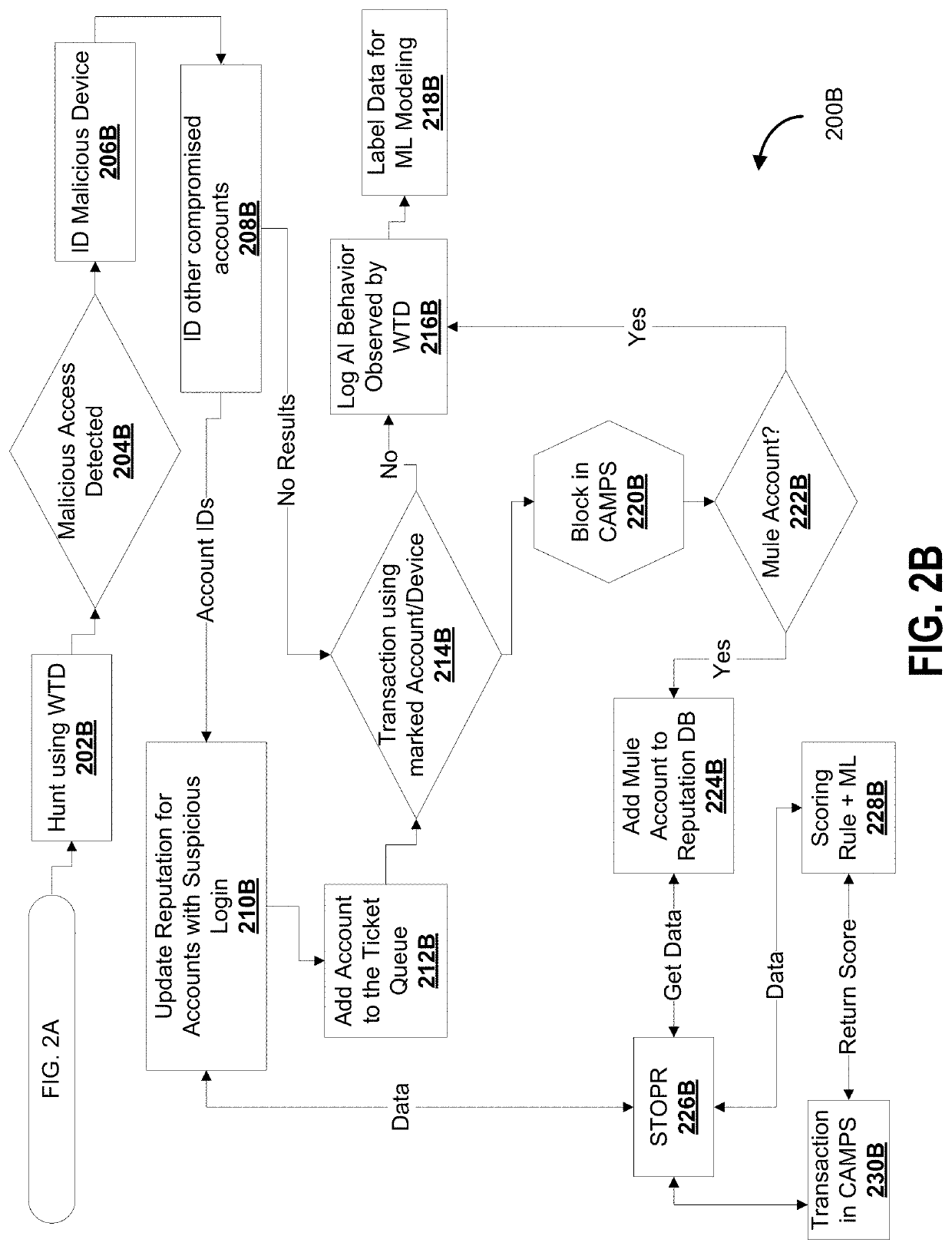System and method for detecting phishing events
a technology of phishing events and detection methods, applied in the field of cybersecurity, can solve the problems of inability to easily scale, limited solutions that each of the above are limited to solving specific problems, and it is more difficult for malicious actors to detect the checksum hidden in the confidential user credentials of baits, so as to prevent the detection of the baiting process
- Summary
- Abstract
- Description
- Claims
- Application Information
AI Technical Summary
Benefits of technology
Problems solved by technology
Method used
Image
Examples
Embodiment Construction
[0052]As described in some embodiments, systems, methods, devices and corresponding computer program products (e.g., non-transitory computer readable media storing machine-interpretable instructions) are contemplated that provide an automated mechanism that provides a technological solution using machine learning data model architectures.
[0053]These computer processes, including machine learning data model architectures and mechanisms in some embodiments, can be implemented, for example, using physical hardware components and devices at a data center which is adapted for phishing detection. A special purpose machine, such as a rack-mounted server appliance or a dedicated hardware circuit may be contemplated in some embodiments, the special purpose machine intercepting certain communications that are suspicious and modifying the routing of data packets accordingly.
[0054]The instruction sets can be stored in the form of software modules which when executed by a processor cause the pro...
PUM
 Login to View More
Login to View More Abstract
Description
Claims
Application Information
 Login to View More
Login to View More - R&D
- Intellectual Property
- Life Sciences
- Materials
- Tech Scout
- Unparalleled Data Quality
- Higher Quality Content
- 60% Fewer Hallucinations
Browse by: Latest US Patents, China's latest patents, Technical Efficacy Thesaurus, Application Domain, Technology Topic, Popular Technical Reports.
© 2025 PatSnap. All rights reserved.Legal|Privacy policy|Modern Slavery Act Transparency Statement|Sitemap|About US| Contact US: help@patsnap.com



